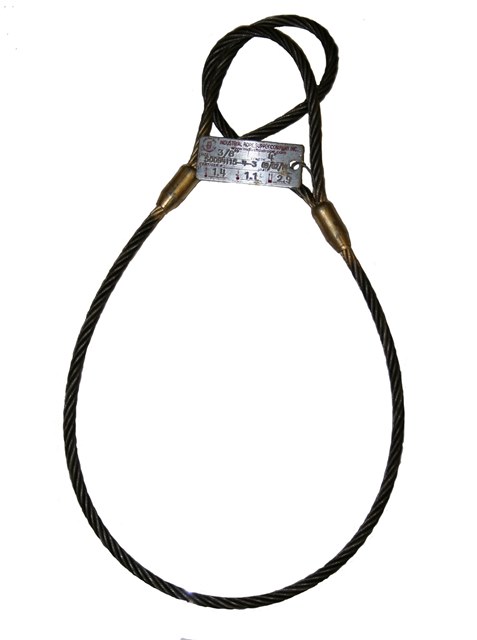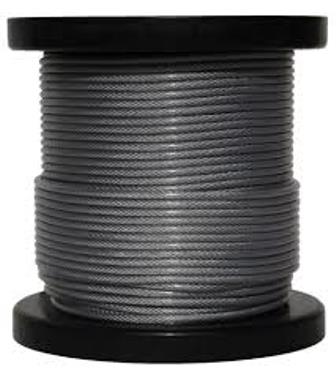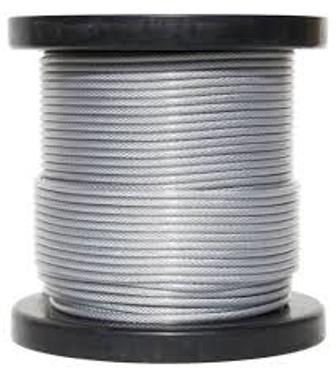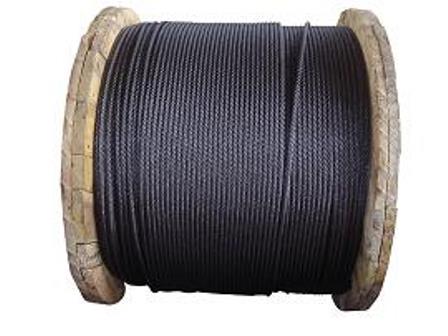Fabrication of Wire Rope Slings
Wire rope comes in many different sizes, constructions and can be used in many different applications. Industrial Wire Rope is committed to finding the best wire rope for your application. We will use our 75 years of business experience to give you the right product the very first time.
Industrial Wire Rope can offer a complete line of ropes made in the USA, as well as wire rope made outside of the USA. We handle 6×19 & 6×36 Class Ropes, 8×19 & 8×25 Resistwist ropes, 19×7 ropes, Flex-X, XLT4, 7 Flex & 7 flex PFV and this is just our most popular ropes. There are very few times we get stumped when asked about the best wire rope for your application, but if we do Industrial Wire Rope can get the right answer with just a phone call.
Wire Rope is a machine and should be cared for in the same way. That is why we offer inspections services, testing services, training services to help our most important asset, YOU THE CUSTOMER! We have information on the basics of wire rope, glossary of wire rope terms and a catalog that provides the most complete and update information concerning wire rope.
Industrial Wire Rope can also custom fabricate a wire rope sling for your special application. We can help you make the right choices when it comes to all your rigging needs. Industrial Wire Rope – the home of the rigging experts.
Applications
- Cranes – Whether it’s for transport, construction, or manufacturing, we have wire rope that can work for you
- Maritime – We offer strong and innovative wire rope for your specific marine application needs.
- Fishing – We have fishing rope brands specifically for your fishing applications.
- Mining – We will deliver the most durable wire and synthetic rope products for the mining industry.
- Bridges – When it comes to bridges and other structures, Industrial Rope has the products to help your structures stand tall.
- Construction & Demolition – We offer any products needed for lifting, dragging, tugging, and load securement.
FAQs and Articles
Video: How They Are Made – Hook Eye Wire Rope Slings
Wire Rope Buying Guides
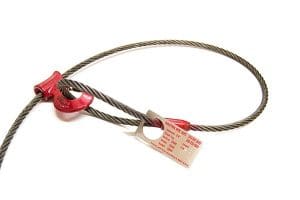
- Cross Sections
- Classifications
- Specifications
- Suggested Wire Ropes for Particular Uses
- Metric Crane Ropes
- Aircraft Cables
- Criteria for Replacement of Wire Ropes
- Diagnostic Guide to Common Wire Rope Degradation
- Rope Wear – Deterioration and Abuse
- Calculating Reel Capacity
- Sheave & Drum Information
- Minimum Sheave & Drum Groove Dimensions
Frequently Asked Questions
What is the Strength of Wire Rope?
Wire rope strength in the United States is typically shown in tons of 2,000 lbs. The wire rope strength is shown as minimum breaking force (MBF). This is a calculated strength that has been accepted by the wire rope industry. When tested on a tensile machine, a new rope will break at a value equal to- or higher than – the minimum breaking force shown for that rope. The published values apply to new, unused rope. A rope should never operate at – or near- the minimum breaking force. The minimum breaking force of the rope must be divided by the design factor required for the application to determine the maximum load allowed on the rope. During its useful life, a rope loses strength gradually due to natural causes such as surface wear and metal fatigue.
What is Fatigue Resistance?
Fatigue resistance involves fatigue of the wire used to make up a rope. To have high fatigue resistance, wires must be capable of bending repeatedly under stress – for example, as a loaded rope passes over a sheave during operation. Increased fatigues resistance is achieved in a rope design by using a large number of wires. It involves both the wire properties and rope construction. In general, a rope made of many wires will have greater fatigue resistance than a same – size rope made of fewer, larger wires because smaller wires have a greater ability to bend as a rope passes over a sheave or around drums. To overcome the effects of fatigue, ropes must never bend over sheaves or drums with a diameter so small as to bend wires excessively. Standard for specific applications contain requirements for minimum sheave and drum sizes. Every rope is subject to metal fatigue from bending stress while in operation, and therefore the rope’s strength gradually diminishes as the rope is used.
What is Crushing?
Crushing is the effect of external pressure on a rope, which damages it by distorting the cross-section shape of the rope, its strands or core -or all three. Crushing resistance therefore is a rope’s ability to withstand or resist external forces, and is a term generally used to express comparison between ropes. When a rope is damaged by crushing, the wires, strands and core are prevented from moving and adjusting normally during operation. In general, IWRC ropes are more crush
resistant than fiber core ropes. Regular lay ropes are more crush resistant than lang lay ropes. 6-strand ropes have greater crush resistance than 8-strand ropes or 19-strand ropes. Compacted strand ropes are more resistant than standard round-strand ropes.
How does Rotation Resistance work?
When a load is placed on a rope, torque is created within the rope as wires and strands try to straighten out. This is normal and the rope is designed to operate with this load-induced torque. However, this torque can cause both single part and multiple part hoisting systems to rotate. Load induced torque can be reduced by specially designed ropes. In standard 6 and 8- strand ropes, the torques produced by the outer strands and the IWRC are in the same direction and add together. In rotation-resistant ropes, the lay of the outer strands is in the opposite direction to the lay of the inner strands, thus the torques produced are in opposite directions and the torques subtract from each other.

